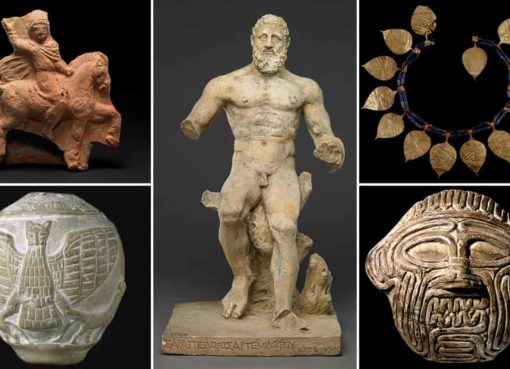
Download PDF: sulaiman-sameer-adam-smith-karl-marx-final-2
It is important for everyone to learn the essential principles of contemporary economics since many of our decisions are made according to these principles. For instance, when we are about to buy certain goods, we see what interests us the most and compare prices of goods to see which one fits our needs the best, then we decide what to buy. The essential principles of today’s economy were produced earlier by great people. Adam Smith and Karl Marx were two economists who made numerous contributions that laid the foundations for enhancing and enlarging the modern economy. Throughout this paper, I will compare between Adam Smith and his students, David Ricardo, Karl Marx, and Thomas Malthus. This comparison will specifically look at aspects of the theory of labor value and optimism of Adam Smith in the eyes of these economists.
Adam Smith wrote An Inquiry into the Nature and Causes of the Wealth of Nations; hence, he was named the father of modern economics. He was very optimistic about his economic model, which is capitalism. Within his theory, Adam Smith applies the concepts of specialization, the invisible hand, and free market to the economy, and suggests a limited role of government in the economic domain.
To begin with, free market means governments should not distort the exchange process between consumers and producers. Producers are free to produce what they see are needed the most and buyers may buy what they like in prices that suit them. The role of government should be limited to protecting people’s rights and their private property and to providing security for the public. “According to the system of natural liberty, the sovereign has only three duties to attend to, namely, external security, internal security (law and law enforcement), and certain public works and certain public institutions” (E.Avey 441). Besides the freedom of choice, freedom of trade is also related to the free market. Adam Smith suggested that letting people trade worldwide will increase efficient production. “Smith argued that trade barriers crippled the ability of countries to produce, and thus should be torn down” (Skousen 9). By giving people the freedom to trade across countries, greater amounts of exports and imports will be purchased, which will give higher benefits to the economy and the society as well. Then, he explained the idea of absolute advantage, which means countries produce the goods that they are best at producing. “If a foreign country can supply with us a commodity cheaper than our selves can make it, better buy it of them” (Skousen 9). Once a community has freedom and a powerful judicial system, people compete to produce goods with higher quality and cheaper prices. This, in turn, leads to an economic boom. Not surprisingly, after generating all these new ideas to enlarge and develop the economy, Smith was really optimistic about capitalism.
Another concept that Adam Smith focused on while developing capitalism was the invisible hand concept, which means that the self-interest of people creates a stable economy without the intervention of governments. He believed that having a free market with just rules will lead to equilibrium. As long as people are free, the producers and workers can agree on certain work conditions and wages, therefore, there is no need for government intervention in the market. “On a general scale, the voluntary self-interest of millions of individuals would create a stable, prosperous society without the need for central direction by the state” (Skousen 19). He added all these concepts to make his model, capitalism, shine in theory.
A very big new concept to make the production more efficient is the division of labor. Adam Smith found out that instead of producing only ten chairs by ten workers, we can divide the work and make each one specialize in producing only one part of the chair. As a result, we will have more chairs produced in a shorter period of time. “Growth, according to Smith, is rooted in the increasing division of labor. This idea relates primarily to the specialization of the labor force, essentially the breaking down of large jobs into many tiny components” (Dhamee). By all these concepts, Adam Smith was confident that capitalism will make the world a better place and capitalist societies will be stable and prosperous.
On the other hand, Karl Marx was an opponent of the capitalist system. He came up with socialism as an alternative approach to deal with the economy in his major work Das Kapital . He defined the idea of social class and class society. Unlike Adam Smith’s classification of labor, into groups: religious and not religious, educated and not educated, working and not working, he was aiming for more social equality by decreasing the gap between capitalists and workers and by the distribution of wealth.
He criticized capitalism generally, and the concept of the division of labor specifically. Marx further elaborated the theory of labor value developed by Adam Smith and David Ricardo. He thought that with labor division, workers are exploited, and it makes them feel useless. He also believed that justice cannot be achieved in a capitalist society. “Since Marx believed that the exploitation of labor follows inherently from the system of private property, he concluded that justice for the worker is impossible under capitalism” (Horace 193). Because of economic exploitation, workers cannot see their contributions to the society as they do not see the final figure. They are also underpaid compared to the capitalists’ revenues. For instance, in the chair industry, workers are specialized in producing one tiny part of the chair. First, they do not feel they are producing something important to the society and secondly, they are receiving a very small amount of money compared to the price at which the chair is sold. On the contrary, capitalists suggested that wages of workers were to be protected under the law of supply and demand. “Adam clearly posits an idealized argument to suggest that wages will be protected by the laws of supply and demand, as neo-capitalists still insist” (Horace 194). The labor value theory was the main difference point between Adam Smith and Karl Marx.
Thomas Robert Malthus and David Ricardo were two close friends, who were students of Adam Smith, but they produced new ideas to attack Smith’s optimism about the free market. “Malthus and Ricardo reversed the course of cheerful Smithian economics, even though, ironically, they were stringent followers of Smith’s laissez-faire policies” (Skousen 51). In his great work, Malthus figured out that the resources of the earth are not sufficient to the growing population. Ricardo, on the other hand, generated the law of comparative advantage and divided the economy into landlords, workers, and capitalists, who fight amongst themselves. By this division, he took the economy to a dangerous stage when people start to fight each other unlike Smith’s system of harmony. He also found the inverse relationship between wages and profits. If wages increase, profits decrease. While we see these big differences, we should keep in mind that they were the generators of our modern economy.
All in all, it is clear how students of Adam Smith came up with unexpected ideas to make us doubt the Smithian optimism. I think that Adam Smith’s contribution to the economy will always be the greatest start point of such a well-organized economy in today’s world. Although modern capitalism varies a lot from the ideal capitalism of Adam Smith, we can tell that capitalism has proved to be an efficient market system, such as the case of the United States.
(*) Postgraduate Student at the American University of Sulaimaniya, Iraq
Copyright 2016, Iraqi Economists Network
Works Cited
Dhamee, Yousuf. 1995. 3 12 2016. <http://www.victorianweb.org/economics/division.html>.
E.Avey, James. “Adam Smith’s Higher Vision of Capitalisim.” Journal of Economic Issues (1998): 441-448. 3 12 2016. <http://web.a.ebscohost.com/ehost/pdfviewer/pdfviewer?sid=5e879127-5f54-459d-b318-2699f2b49102%40sessionmgr4006&vid=1&hid=4112>.
Horace, L.Fairlamn. A capitilsits theory of Exploitaion. Socail Theory and Practice, 1996. 193-223. 3 12 2016. <http://web.a.ebscohost.com/ehost/pdfviewer/pdfviewer?sid=84114d7f-3139-45f3-affe-e0da48fd7566%40sessionmgr4006&vid=1&hid=4112>.
Skousen, Mark. The Big Three in Economics. London : M.E. Sharpe, 2004. 1 12 2016. <http://www.academia.edu/10903079/Big_Three_in_Economics_Adam_Smith_Karl_Marx_and_John_Maynard_Keynes>.








Comment here